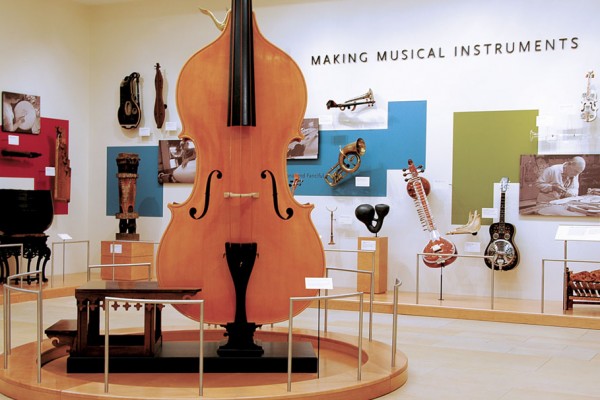Continued (page 8 of 13)
What was it like directing veterans such as Susan Sarandon and Pierce Brosnan as well as up-and-coming stars like Carey Mulligan?
I was so lucky. They were open and collaborative. They left their ego at home. I was very lucky to have my first experience be such a good one. I’ve heard the horror stories about what first-time directors go through. Pierce and Susan were so generous. I was totally intimidated. The night before I went on set, I was scared out of my mind. I think the only thing that actually got me on set was that time was passing, and it was inevitable. Carey Mulligan had just wrapped An Education. We saw a lot of girls for this role, and no one really knew who she was. She auditioned like everyone else, and we immediately knew there was something really, really special about her. It’s been a cool process to see her star rise.
The Greatest is very emotional and demonstrates so many manifestations of grief. Was filming the movie emotional?
I think the low-budget aspect of this film helped us. We shot the movie in 25 days. Everything was at hyper-speed. There were scenes where we would have closed sets, and they were emotional. There were days where you look over at the boom guy, and he has tears running down his face. For the most part, we tried to keep it light and fun. I think everyone was really happy with the finished product, but it’s hard to watch. The actors had to go to a dark place while making the movie.
Have many film festivals will have screened this film before it comes to Sedona? What’s next for The Greatest?
We’ve been really selective about the film festivals we’ve been part of. We opened it at Sundance, and the movie opened the Hamptons [International] Film Festival. Sedona will be our fifth festival. The film will be released in March in LA and New York. Hopefully it will go wider. We’re lucky that Carey is getting so much attention – we’re hoping she’s nominated for an Oscar. We’re going to try to get as many people as we can to see it.
Robert Osborne: Turner Classic Movies Presents…
For the third year in a row, the host of Turner Classic Movies since 1994, Robert Osborne, returns to the Sedona International Film Festival to present three classic films: Michael Curtiz and William Keighley’s The Adventures of Robin Hood (1938) on Feb. 25; George Stevens’s A Place in the Sun (1951) on Feb. 26; and John Stahl’s Leave Her to Heaven (1945) on Feb. 27. As in previous screenings, Robert will give viewers behind-the-scenes info about each film; after the screenings, he will answer questions. Robert was in Sedona last September to present Some Like it Hot and Sweet Smell of Success along with the film’s star, Tony Curtis, at Harkins Sedona 6. Robert took time out from his busy schedule to sit by the fire at L’Auberge de Sedona and talk shop with Sedona Monthly.
Sedona Monthly: Tell us why you chose to present these three films.
Robert Osborne: The whole concept of what we do at the film festival is to show classic films people maybe have seen but also introduce them to one or two maybe they haven’t seen. The Adventures of Robin Hood is just one of the most interesting and lively and colorful movies. It’s vivid color, like in a comic book, and the characters are so heroic. It’s not only entertaining but it’s what movies are all about: lively and full of action. We want people to have fun at the movies. A lot of times when people go to films today they forget how fun and lively they can be. [The movie] is either juvenile comedy or really serious like No Country for Old Men or There Will Be Blood. We want to show movies that are great fun – movies the whole family can go see. A Place in the Sun is one of the great movies of all time. It’s a really interesting story based on a true incident about a boy who committed a murder accidentally. It has to do with social inequality and someone who wants to belong to the upper classes. It’s a movie that haunts you. Of all the movies I’ve seen in my lifetime, it’s probably my favorite. It’s a great example for filmmakers, and I know at the festival you have a lot of would-be filmmakers. It’s a great example of what a director does for the material. Leave Her to Heaven is a great movie. It’s referred to as the first and only Technicolor film noir. It’s not really film noir because it’s not about the underbelly of life, but it’s about obsessive love, a woman who loves her husband so much she can’t bear to share him with anybody. I also picked it because not only is it a film not a lot of people know, but a lot of it was filmed around Sedona. It won an Academy Award for cinematography in 1945. It’s the last one we’re going to show. I want to encourage people to see it. It was a bestselling book and one of the most popular movies made in the ‘40s, but it’s not a movie a lot of people know today. We’ve never shown it on TCM before, but we’re about to next year.
Talk to us about the benefit of seeing these movies on the big screen as opposed to watching them on TV.
It’s a totally different experience. You see different things. When we watched Some Like it Hot in Sedona, there were people who came up to me afterwards and said it was like seeing a brand new movie because you see things you don’t see when it’s on a small screen. When we saw Marilyn Monroe on the big screen we just gasped – she was really something. As many times as I’ve seen that movie on TV, I never got the impact that I got seeing her on the big screen. That’s the whole purpose of showing these movies at a festival. It’s also important to see them with other people so that you’re sharing a funny comedy or a drama with 800 or 900 other people. It’s very communal, particularly with comedies or adventure films. There’s something about sharing that with other people. It’s like a ballgame –it’s much more fun to watch with other people who are cheering and yelling than it is watching it at home by yourself.
The Adventures of Robin Hood certainly seems applicable to this economy. Do people tend to gravitate toward comfortable classics during hard economic times?
I think a lot of times they are appealing because most end up happy – they want you to leave feeling good. You’ll find almost every movie, even serious movies, end up on a positive note. That’s not true nowadays. In the Depression days, the movies were popular. To get out of the real world, people went to see Fred and Ginger dancing on an Art Deco set. The problem today is the fact that it takes about three years to make a movie from the time you get the idea. We’re not getting today what people really need. What people needed three years ago, they don’t need today. Three years from now, we’ll probably be getting a lot of comedies and upbeat films.



